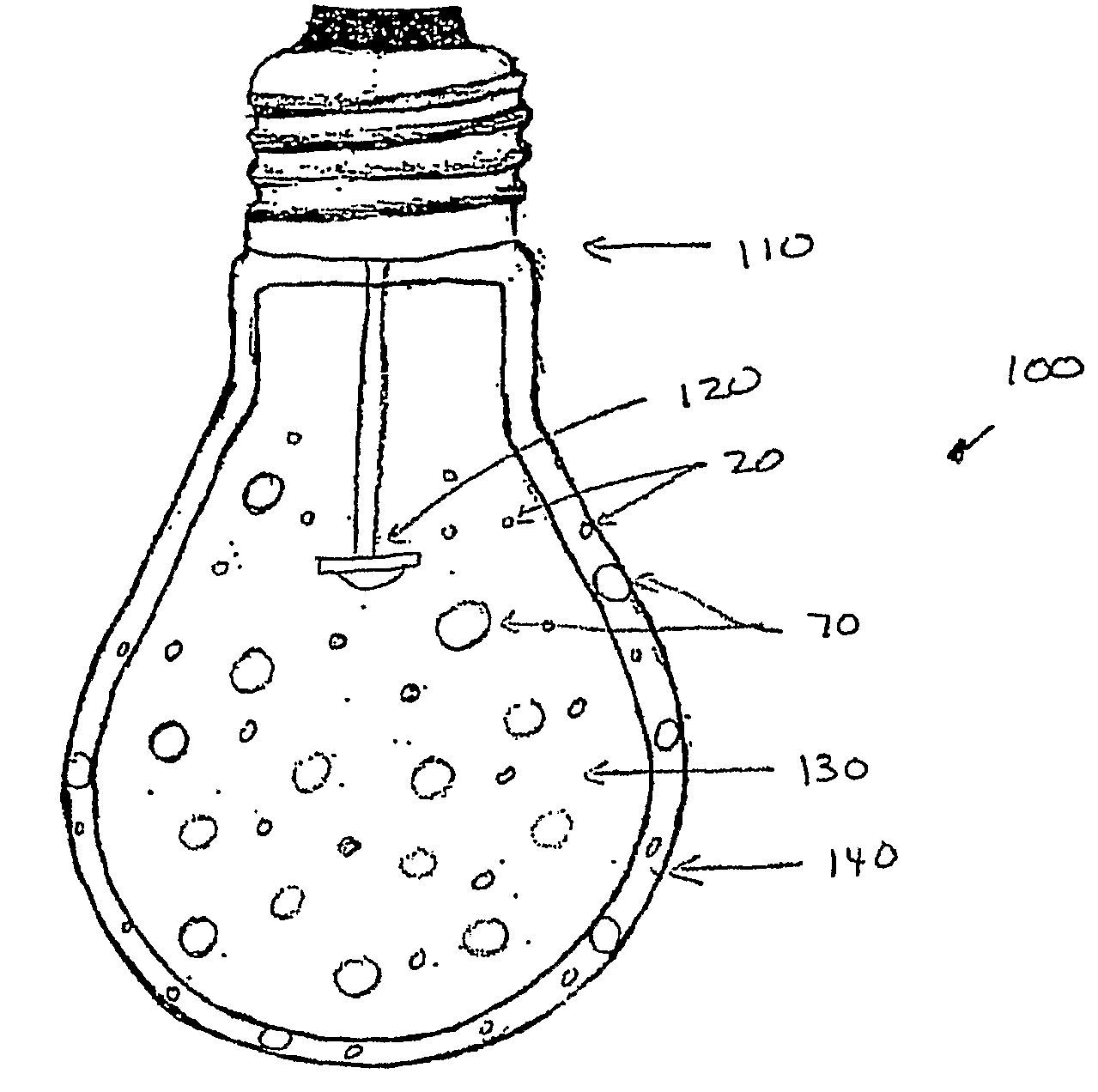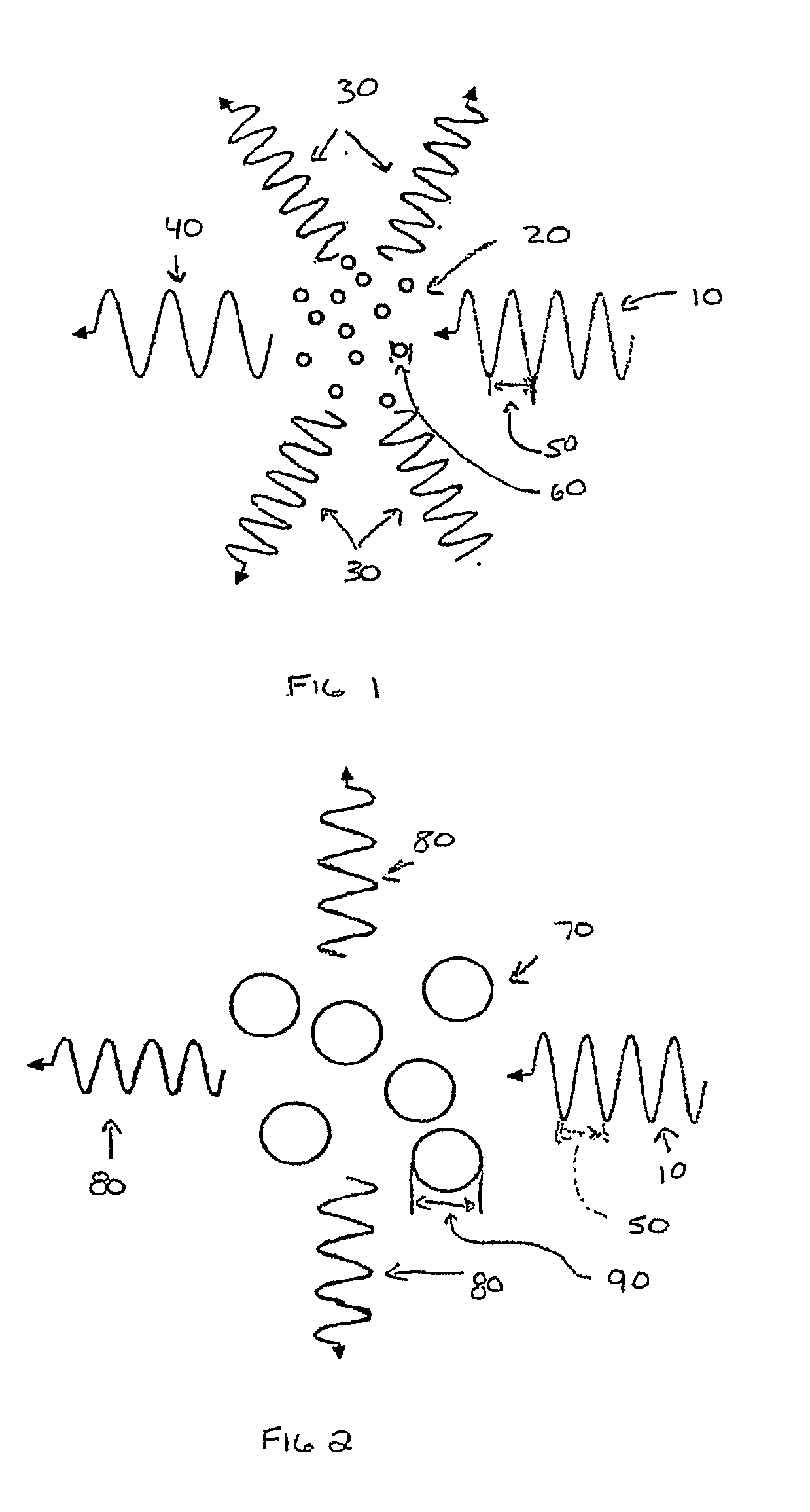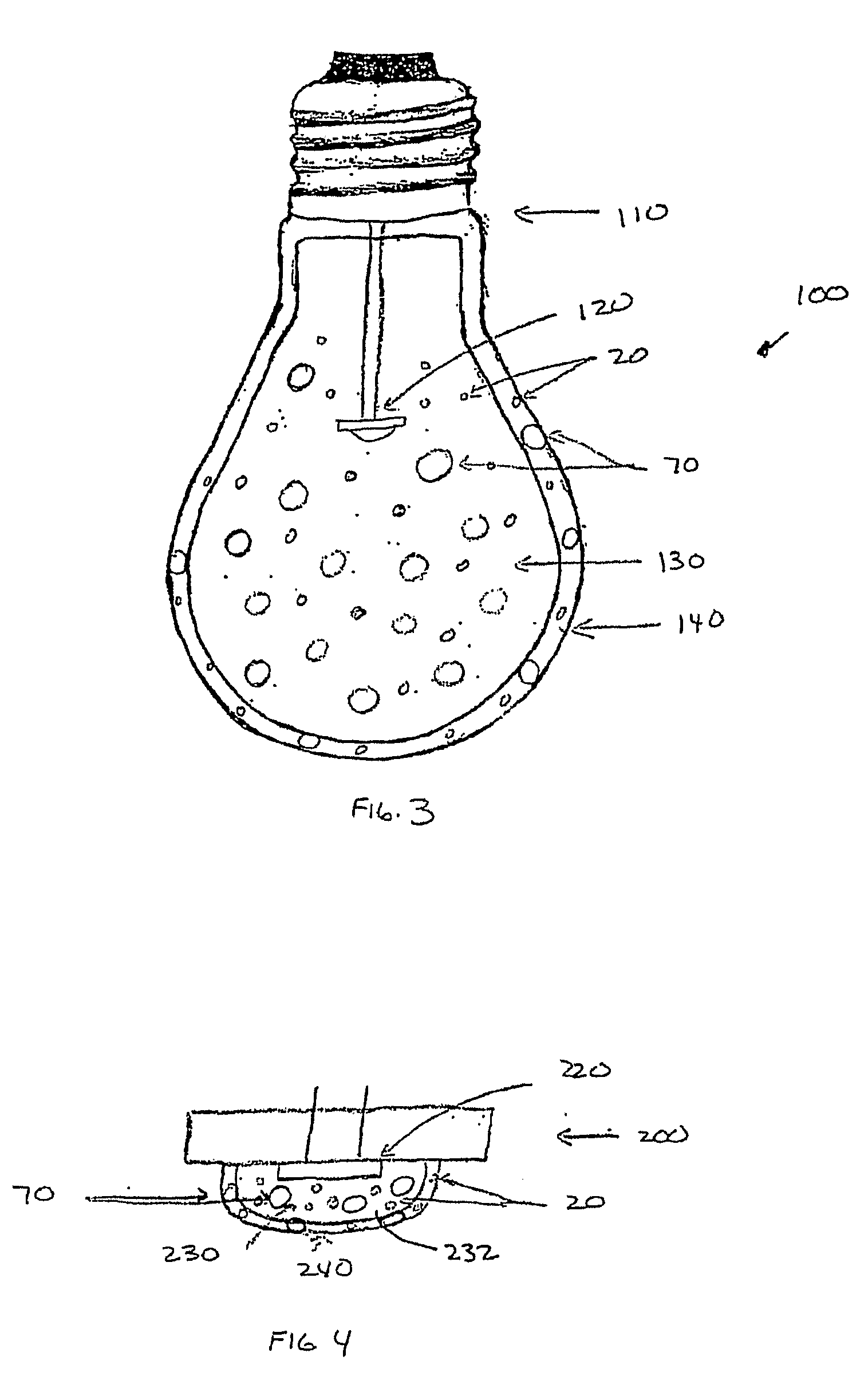Method of Light Dispersion and Preferential Scattering of Certain Wavelengths of Light-Emitting Diodes and Bulbs Constructed Therefrom
a technology of light-emitting diodes and light-emitting diodes, which is applied in the direction of discharge tube luminescnet screens, semiconductor devices for light sources, lighting and heating apparatus, etc., can solve the problems of less than unity, poor color rendition of phosphors presently known, and poor light intensity of bulbs constructed from them, so as to achieve little or no loss of light intensity
- Summary
- Abstract
- Description
- Claims
- Application Information
AI Technical Summary
Benefits of technology
Problems solved by technology
Method used
Image
Examples
Embodiment Construction
[0024]Reference will now be made in detail to the present preferred embodiments of the invention, examples of which are illustrated in the accompanying drawings. Wherever possible, the same reference numbers are used in the drawings and the description to refer to the same or like parts. According to the design characteristics, a detailed description of each preferred embodiment is given below.
[0025]FIG. 1 shows a cross-sectional view of light emitted from an LED being Rayleigh scattered from sub-wavelength particles 20 in accordance with a first embodiment. As shown in FIG. 1, typically the incoming light 10 will include a plurality of wavelength components, including a wavelength 50 based on the light-emitting material used within the LED (not shown). For example, in a typical LED emission spectrum, the wavelength 50 emitted from the LED corresponding to the color blue will be approximately 430 nm. As shown in FIG. 1, the incoming light 10 impinges on a dispersed set or plurality ...
PUM
 Login to View More
Login to View More Abstract
Description
Claims
Application Information
 Login to View More
Login to View More - R&D
- Intellectual Property
- Life Sciences
- Materials
- Tech Scout
- Unparalleled Data Quality
- Higher Quality Content
- 60% Fewer Hallucinations
Browse by: Latest US Patents, China's latest patents, Technical Efficacy Thesaurus, Application Domain, Technology Topic, Popular Technical Reports.
© 2025 PatSnap. All rights reserved.Legal|Privacy policy|Modern Slavery Act Transparency Statement|Sitemap|About US| Contact US: help@patsnap.com



